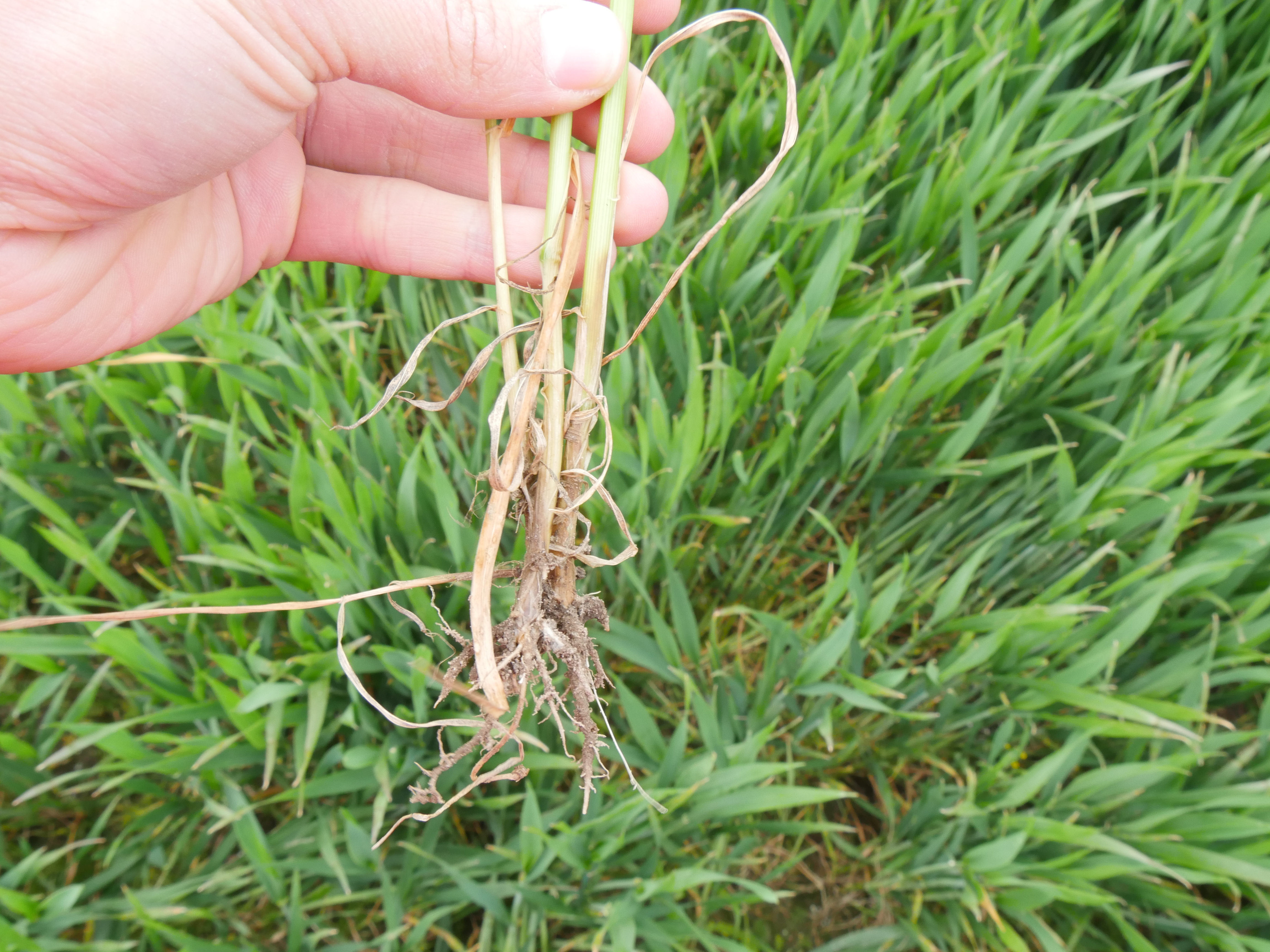Getting to the root of the matter
Tuesday, 24 September 2019
With summer rainfall decreasing, or at least becoming more unpredictable, it’s important that crops can make the best use of any available water. We need to know how our current farming practices affect the plants’ ability to access and use water, and what we might be able to do, to improve things in the future.
That’s why AHDB’s Strategic Cereal Farm West is home to a replicated tramline trial looking at the impact of different cultivation strategies on crop rooting, yield and soil health.
Rob Fox hosts the Strategic Cereal Farm just outside Leamington Spa, Warwickshire, where on-farm trials are linked to research findings.
An AHDB PhD project (Student Report No. SR41 Quantifying rooting at depth in a wheat doubled haploid population with introgression from wild emmer) completed by Christina Clarke reported that wheat crops grow insufficient root length in deeper soil layers and therefore cannot take up available water in the subsoil. The optimum root length density (RLD) is 1 cm/cm3 but past studies, as reported by Christina, have found that wheat in the UK often has RLDs less than this, below depths of 40 cm.

The 16.9 ha trial of winter wheat for harvest 2019 included three cultivation depths on medium to heavy clay. Each cultivation depth is repeated again in a different part of the field.
The 5 cm cultivation depth treatment was established using a disc cultivator and the 10 cm and 15 cm cultivation depth treatments were established using a single pass deep soil cultivator.
The 15 cm treatment had an additional pass of a subsoiler. The seedbed preparation for all treatments was completed using a spring tine, followed by a tine seed drill on 19 October 2018 and all treatments were rolled. The cost of establishment for the different cultivation depths ranged from £55.66/ha at 5 cm, to £79.45/ha at 15 cm and £112.01/ha at 30 cm.
Once the trial had been established, the Strategic Farm research team used a penetrometer to identify locations to represent a range of soil conditions within each tramline. They then used the maximum, medium and minimum penetrometer resistance (MPa) at a depth of 30 cm, from 20 random positions, as sample positions to monitor differences in soil properties and crop growth during the trial.
This spring, the team excavated wheat plants and assessed traits above and below ground. They counted:
- Number of tillers on each plant
- Width of the root system
- Depth to maximum width: the vertical distance from the base of the shoot system to the point of maximum width
- Root system angle: the angle from the horizontal of the outermost roots on both sides of the crown at approximately 5 cm from the shoot base
- Whole crown branching density: the number of roots coming off the main axes, measured using a 1–5 scale, where 5 is the highest
- Nodal root length and number of nodal roots per tiller: nodal roots appear primarily on the crown, which is typically one to two centimetres below the soil surface
- Number of seminal roots: seminal roots emerge before the second leaf appears, sometimes referred to as primary roots, and generally grow deeper into the soil than nodal roots
- Root biomass: the total dry weight of live roots
The team then assessed root length density down the soil profile, to a depth of 1 m, at the more mature growth stage of post-anthesis.
With the shallow cultivation depth (5 cm), the surface layer was more compacted, which led to wider root angles. A wider root angle could reduce maximum rooting depth and rooting biomass at depth, due to increased horizontal growth, meaning that the plant could be less able to take up water.
To see whether this is true, the Strategic Farm team took 100 cm soil cores between flowering and grain fill, to look at root length density and biomass in the deeper soil profile.
By dividing the soil core into 20 cm sections, the researchers can see whether easily measured features of the root crown are associated with root length density further down in the soil.
There was some evidence of subsoil compaction in the deep cultivation treatment (30 cm), which seemed to reduce the number and length of nodal roots. This, in turn, reduced the number of tillers and above-ground biomass.
However, where compaction was found at shallower depths within the top 15 cm, nodal root numbers increased. This suggests that the crop might produce a greater number of nodal roots to compensate for restricted growth in root length.
Soil health
The research team has also been assessing the soil conditions using the soil health scorecard and looking at earthworm populations using the AHDB factsheet, How to count earthworms. An active population for arable soils is deemed to be eight or more per 20cm3 pit.
This article appeared in Grain Outlook, autumn/winter 2019

